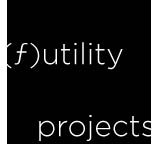Boundary Transactions
The critical dynamic in this process is not a progression of tactical choices but an effort to make sense of the situation and to develop “a collective rationale, linking what is happening now to what has happened in the past and what needs to happen in the future” (Morley 1992:206). Development of such a rationale involves both cognitive and political events. The cognitive events involve individual efforts to understand what is happening. The political events occur because the parties are usually organizations in which “different people have different views”…
-Dean G. Pruitt and Peter N. Carnevale,
from Negotiation in Social Conflict
Through research into various characteristics of the neighborhood in which The Franklin is sited, the (ƒ)utility projects collaborative considers resonances and dissonances, present and potential, between a visual art project space and a rapidly changing and historically contentious part of Chicago’s landscape. In boundary transactions, (ƒ)utility retains the diagonal-line visual language of The Franklin’s distinctive skin while modifying the ratio of form to void; the wall panels will now correspond to current, block-by-block specifics within a three quarter mile radius of the site.
Within this new framework, (ƒ)utility projects considers the neighborhood’s possible future, asking how changing realities of occupancy and use will clash or align with existing ones. The collaborative is interested in the potential outcomes of this change and whom these potential outcomes serve; whether and to what extent there is an overlap between community residents and the visual art community drawn to The Franklin’s events, and how to visually sustain this conversation in a meaningful and cohesive way within the constraints and possibilities present in The Franklin as a project space.










